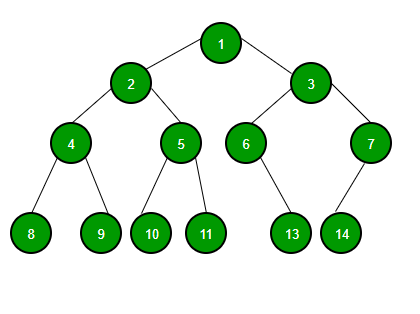Binary Tree using dstructure library in Python
Last Updated :
09 May, 2021
The dstructure package is a Python library for dealing with data structure and algorithm. In this article, we will discuss how we can implement a binary tree and perform various operations using the dstructure library in Python.
Installation
To install dstructure open the terminal and write the below command:
pip install dstructure
Binary Tree
A tree whose elements have at most two children is called a binary tree. Since each element in a binary tree can have only 2 children, we typically name them the left and right child. However, dstructure library helps to directly implement a binary tree.
A Binary Tree node contains the following parts.
- Data
- Pointer to the left child
- Pointer to the right child

Methods Available
Let’s see different methods available to handle binary tree. First, we will make the binary tree and then apply all the methods.
In order to create a binary tree, we first import the dstructure module, create a BTree class object to initialize an empty binary tree, and use the insert() method to insert nodes into the tree. Below are the various methods used to create and perform various operations on a binary tree.
- insert(int_value): This function takes int value and adds that value to the tree.
Python3
from dstructure.BTree import BTree
obj=BTree(23)
obj.insert(10)
obj.insert(20)
obj.insert(30)
obj.insert(40)
print(obj)
|
Output:
<dstructure.BTree.BTree object at 0x000001F02815B648>
- inorder(obj): This function takes an object as an input and returns the inorder traversal of the tree.
Python3
inorder = obj.inorder(obj)
print(inorder)
|
Output:
[10, 20, 23, 30, 40]
- preorder(obj): This function takes an object as an input and returns the preorder traversal of the tree.
Python3
preorder = obj.preorder(obj)
print(preorder)
|
Output:
[23, 10, 20, 30, 40]
- postorder(obj): This function takes an object as an input and returns the postorder traversal of the tree.
Python3
postorder = obj.postorder(obj)
print(postorder)
|
Output:
[20, 10, 40, 30, 23]
- get_bfs() : This function return the breadth-first search traversal of the tree.
Python3
bfs = obj.get_bfs()
print(bfs)
|
Output:
[23, 30, 10, 40, 20]
- get_dfs(): This function returns the depth-first search traversal of the tree.
Python3
dfs = obj.get_dfs()
print(dfs)
|
Output:
[23, 10, 20, 30, 40]
- left_view(): This function returns the left view of the tree.
Python3
left = obj.left_view()
print(left)
|
Output:
[23, 10, 20]
- right_view() : This function return the right view of the tree.
Python3
right = obj.right_view()
print(right)
|
Output:
[23, 30, 40]
- total_nodes() : This function returns the number of nodes in the tree.
Python3
count = obj.total_nodes()
print(count)
|
Output:
5
Share your thoughts in the comments
Please Login to comment...